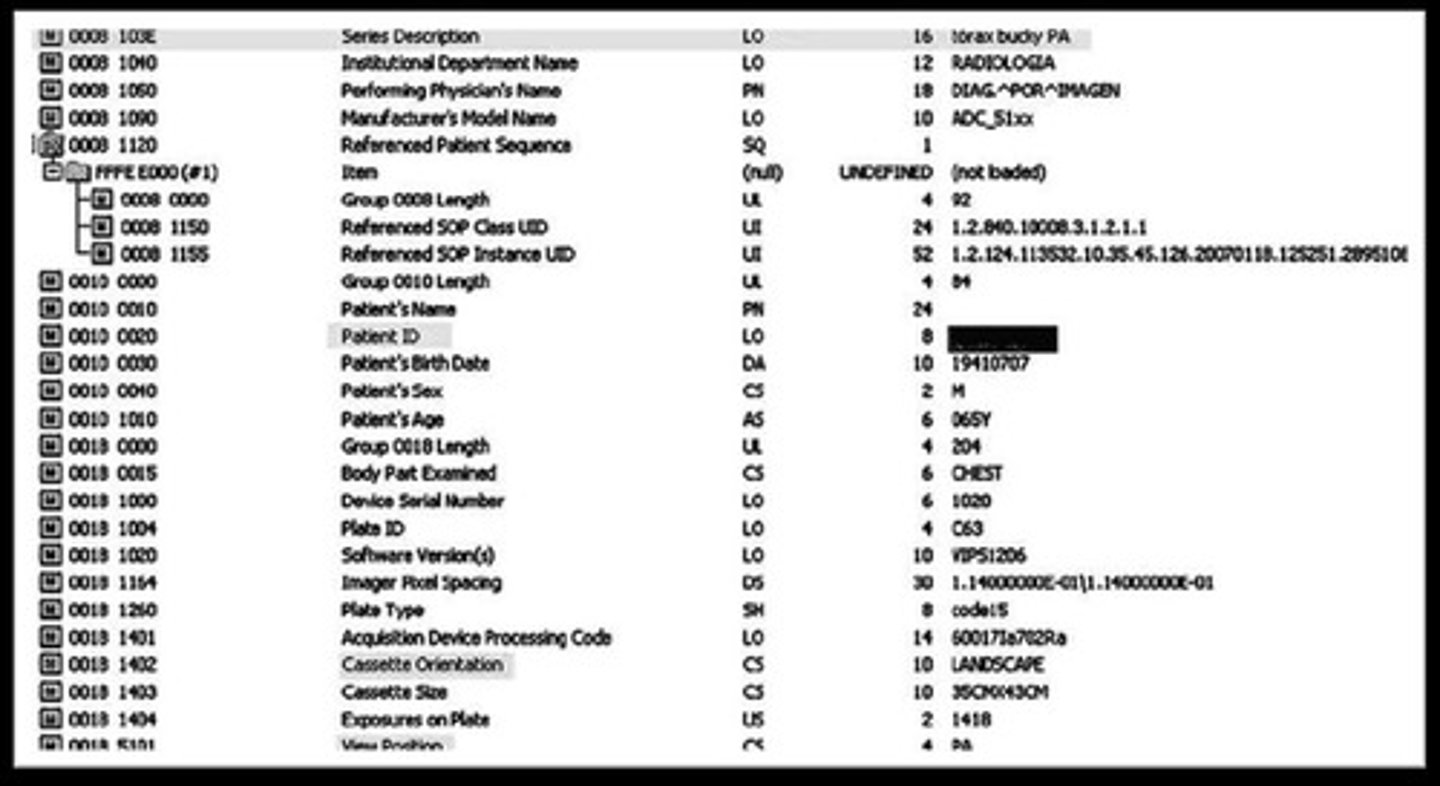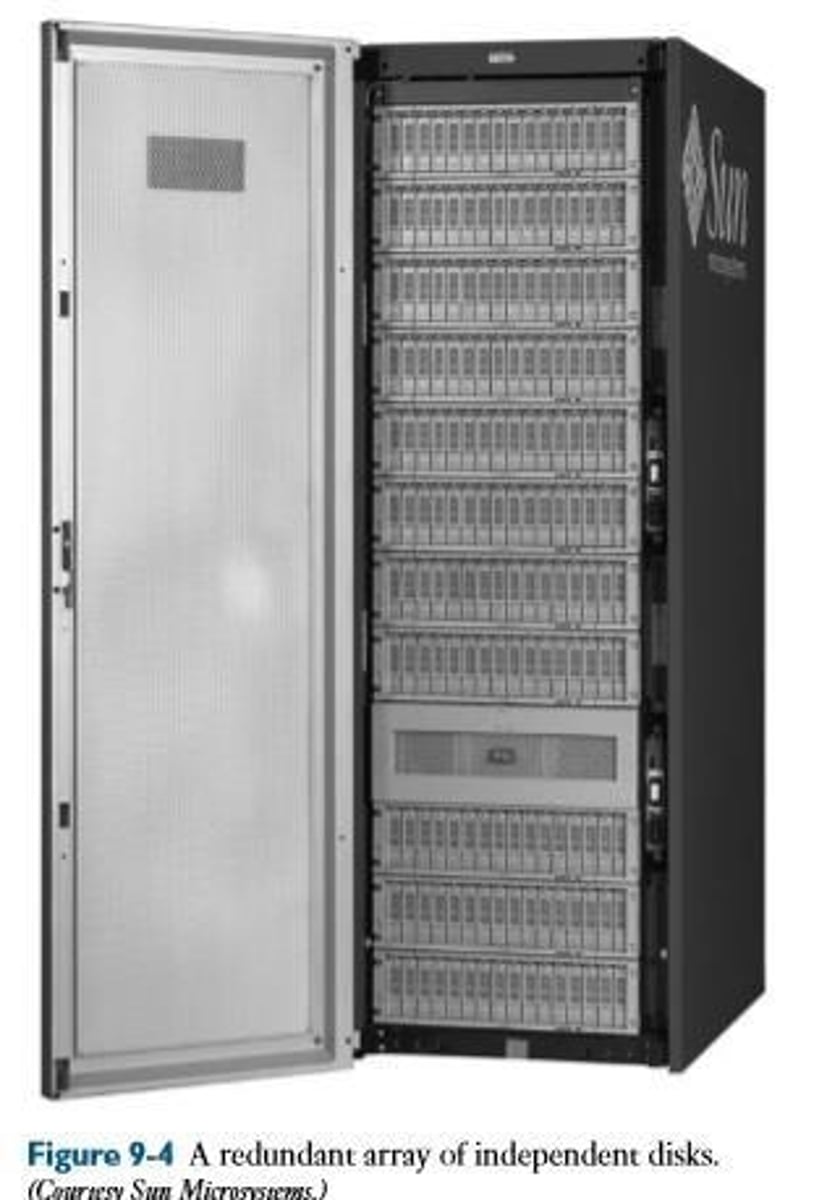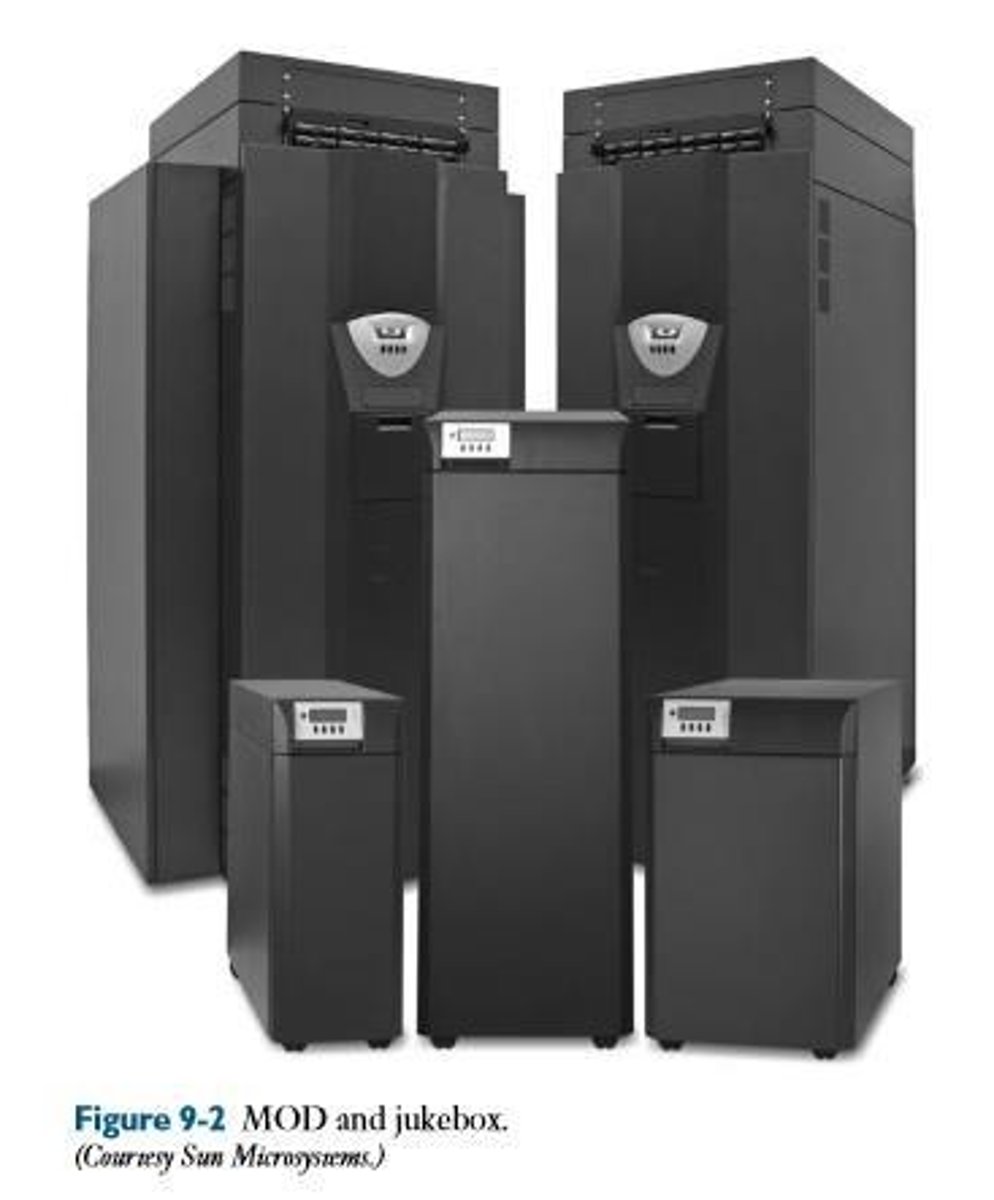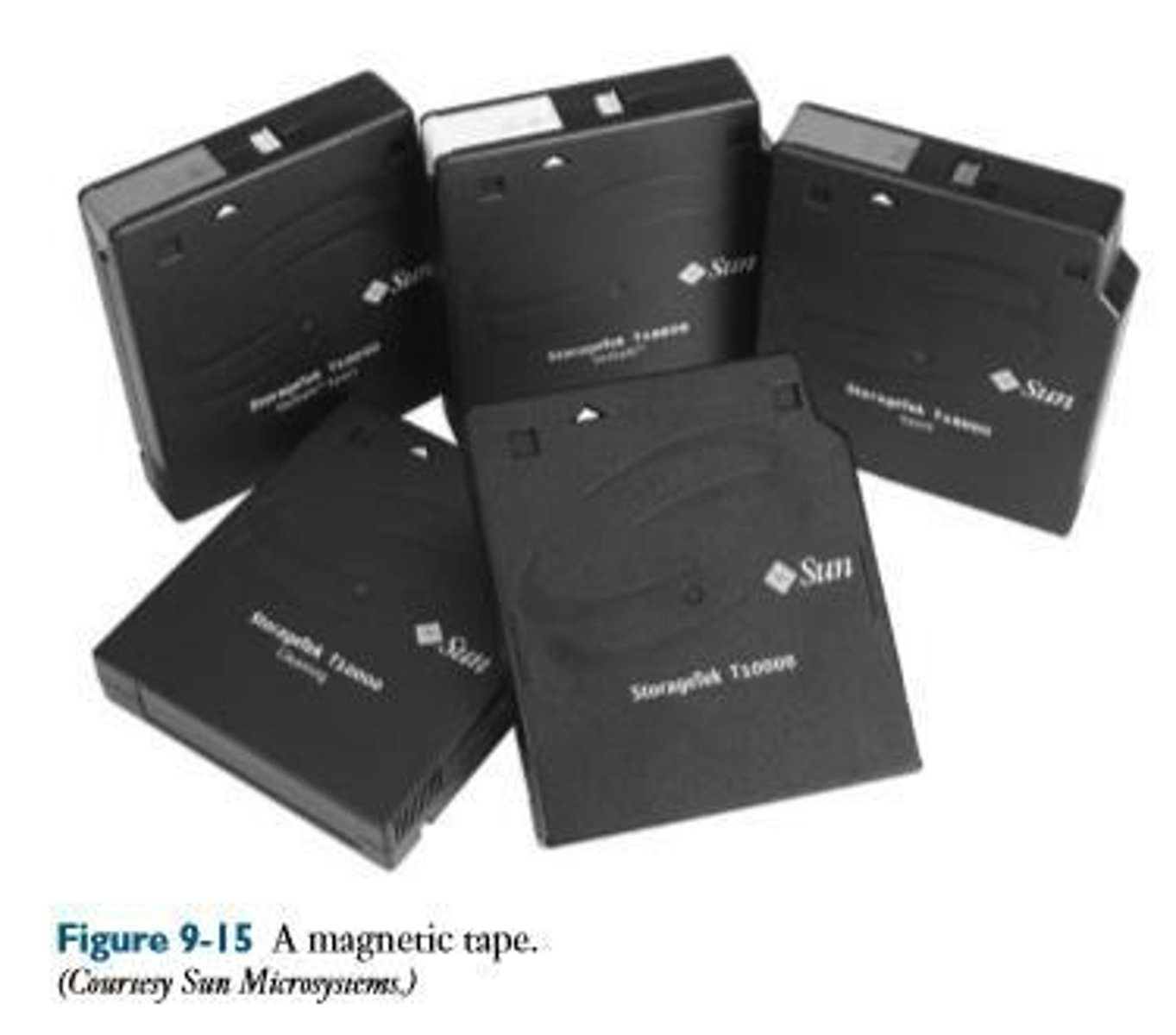PACS Archiving & Peripherals
1/39
There's no tags or description
Looks like no tags are added yet.
Name | Mastery | Learn | Test | Matching | Spaced |
|---|
No study sessions yet.
40 Terms
PACS Archive
Stores all patient & image data, often on magnetic tape or optical disk.
Image Manager
Contains the master database of everything that is in the archive.
Image Storage or Archive Server
One of the two major categories in PACS.
Application Service Provider
Concept defining a service that provides software applications over the internet.
DICOM
Digital Imaging and Communications in Medicine, a standard for transmitting, storing, and sharing medical images.

Compact Disk (CD)/Digital Versatile Disk (DVD) Burners
Commonly used in a PACS environment for storing and distributing images.
Image Header Information
Contains metadata about the image, such as patient's name, identification number, examination date, ordering physician, and location.
Mirrored Database
A reliable feature where two identical databases run simultaneously to ensure continuity if one fails.
Radiology Information System (RIS)
A system that manages medical imagery and associated data.
Hospital Information System (HIS)
A system that manages hospital administrative and clinical data.
Electronic Medical Record (EMR)
Digital version of a patient's paper chart, containing medical history and treatment information.
SQL
Structured Query Language, used for managing and manipulating databases.
Image Acquisition
The process of capturing images for storage in the PACS.
Pointer
A reference in the database that links to the corresponding image data.
Order Placement in RIS
The first step in the process where a radiology study is requested.
Image Retrieval
The process of accessing stored images from the PACS.
Image Distribution
The process of sending images to various locations or systems.
Storage Control
Management of the receipt, storage, and distribution of images in the PACS.
Fastest Growing Components in PACS
Refers to the increasing importance and development of PACS archives.
Complex Arrangement of Computers & Storage
Describes the intricate setup of hardware and software in PACS.
DICOM Processes
The various operations and protocols involved in handling DICOM images.
Historic Images
Images that have been previously stored in the PACS for long-term access.
Image Manager Functions
Controls the receipt, retrieval, and distribution of images and manages DICOM processes.
Database Fields
Specific areas in the database where information about images is stored.
Image Storage / Archive Server
Consists of the physical storage device of the archive system.
Tier
A level, layer, or division of something.
Short-term tier
Being online or available very quickly, 3-5 seconds.
Long-term tier
Means near line, images that must be retrieved from a tape or disk storage device, 1-5 minutes.
RAID
Composed of several magnetic disks or hard drives that are linked together in an array.

Size of RAID
Ranges from Several Hundred Gigabytes to Several Terabytes (500 GB - 3T).
David Patterson, Garth Gibson & Randy Katz
Coined the term RAID in an article entitled 'A Case for Redundant Arrays of Inexpensive Disks (RAID)'.
Levels of RAID
Introduced 5 levels of RAID, now there are 11 levels, most of which are combinations of the first 5.
Optical Disk & Magnetic Tape Archive solutions
Use a jukebox to hold the tapes or disks.

Magneto-optical Disk
Very similar to a compact disk (CD) or digital versatile disk (DVD), read optically with a laser, housed within a plastic cartridge.
Digital Versatile Disk
1st introduced for use in video, holds up to 17 GB compared to CD 650 MB.
Ultra Density Optical
New generation MOD that uses blue laser technology in its Read & Write activities.
Tape libraries
Provide the greatest scalability of the long-term archive options, hundreds of terabytes to even a petabyte.
Magnetic Disk
Used for long-term storage, often contained within a jukebox or library.
Types of Magnetic Tape
1. Linear Tape Open (LTO), 2. Digital Linear Tape (DLT), 3. Advanced Intelligent Tape (AIT).

Disadvantage of Magnetic Tape
Unreliability over multiple uses.